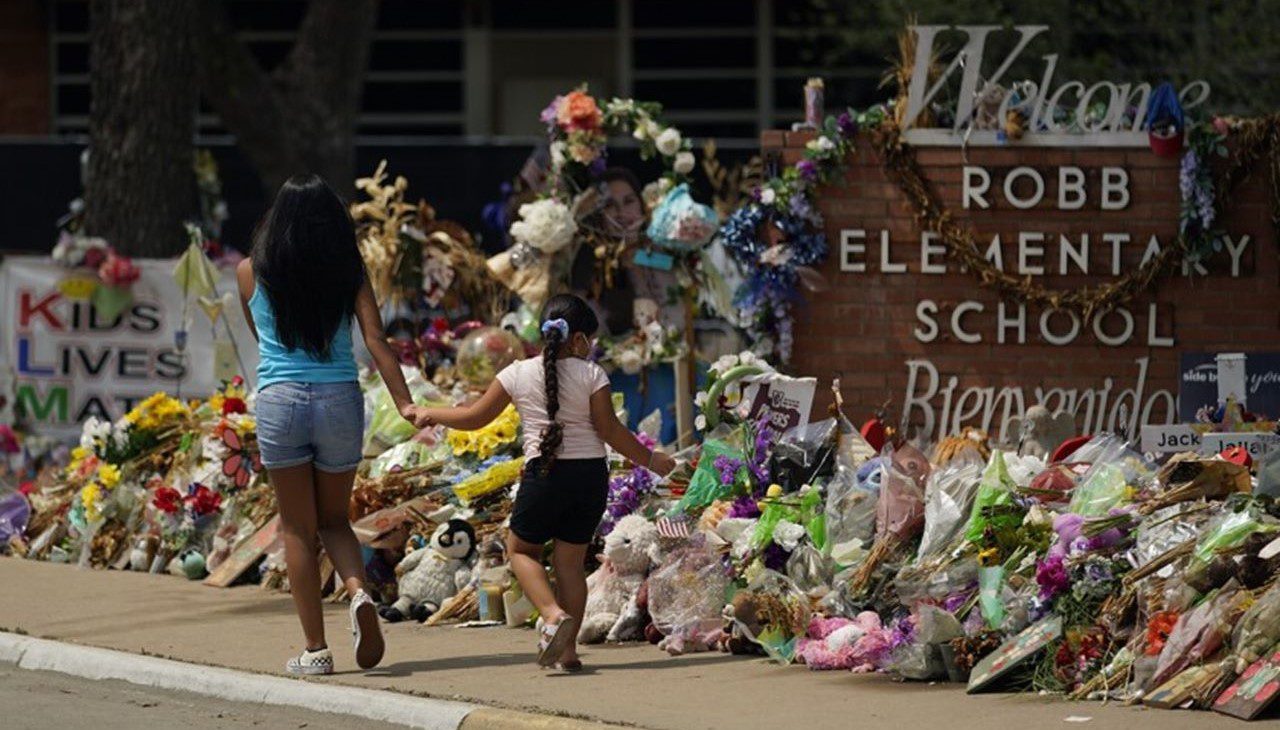
Could Panic Buttons Save Lives in a School Shooting? More Schools Think So
Education Week | By Caitlynn Peetz | January 30, 2024
When Texas students return from summer break for the 2025-26 school year, their classrooms will have to be equipped with technology that allows teachers to call for help immediately with the touch of a button, whether they need help from within the building for a medical emergency or from local police in the case of an active shooter.
Following legislation that passed last May, Texas will be one of three states—along with New Jersey and Florida—to require that every public school be equipped with a panic alarm system that allows school personnel to call police immediately and silently, without picking up a phone to dial 911.
The idea is to reduce police response times in emergencies when seconds matter, and when a faster response can mean fewer casualties.
Two other states—New York and Tennessee—have passed laws that require schools to consider panic alert systems in their safety plans.
The five state laws are known as Alyssa’s Law, named for 14-year-old Alyssa Alhadeff, one of the victims killed in the 2018 shooting at Marjory Stoneman Douglas High School in Parkland, Fla., whose parents have lobbied for the legislation.
Lawmakers in a number of other states are considering panic button laws for schools. And even without state requirements, more districts are equipping their schools with the technology.
Those systems can come in the form of an app on staff members’ phones or, increasingly, a button that teachers wear around their necks along with their ID badges. The systems have options to call for help, often from within the school, when a student has a medical problem or to trigger a school-wide lockdown and police response when there’s an active shooter.
“There’s a lot of steam behind it this year,” said Will Fullerton, who handles government affairs for Centegix, a manufacturer who says its panic alarm system is now installed in 6 percent of schools nationwide. “A lot of times, you’ll see something like Uvalde happen and there’s this huge flurry of activity and then it goes away. But we’re seeing school safety stay at the forefront this year.”
There’s widespread agreement that seconds matter in an emergency, and that a faster police response can save lives. However, some security specialists caution schools against being drawn into complacency because they have the ability to call police with the touch of a button. They can’t drop other security measures and staff training, they say.
Police called with the push of a button
While schools have conducted active shooter drills for decades, people can still panic or forget important steps when faced with a real emergency, said Brent Cobb, Centegix’s CEO.
That’s where a panic button can come in handy, he said.
Centegix’s panic alarms require staff to push a button that they wear around their necks with their ID badges. If the staff member pushes the button enough times, it triggers alarms that sound over the school’s intercom system and flashing lights, similar to when a fire alarm is going off. The system also sends the location of the alarm’s origin to police, who are equipped with a map of the school.
With the Centegix system, staff can push the button three times to signal “I need help,” indicating a lower-level problem that doesn’t require a lockdown or police response. In that situation, a designated team of school staff is notified.
That team usually consists of an administrator, health personnel, and school security or school resource officers, Cobb said.
To trigger a campus-wide alert and call to police, staff have to push the button eight or more times in succession.
Some security experts have cautioned districts against overlooking smaller, day-to-day fixes, like making sure schools’ exterior doors are locked, in what they see as a rush to adopt technology-based security solutions.
“In throwing so much technology at the problem … we may have unintentionally created a false sense of security,” Mo Canady, executive director of the National Association of School Resource Officers told the Associated Press in 2022.
Ken Trump, who runs an Ohio-based school security consulting firm, described the quick adoption of security technology as “security theater” and part of a scramble by schools to show that they’re doing something.
“People want visible, tangible things,” Trump told the Associated Press. “It’s a lot harder to point to the value of training your staff. Those are intangibles. Those are things that are less visible and invisible, but they’re most effective.”
The attack in Uvalde illustrated the shortcomings of some panic-alert systems. Robb Elementary School had implemented an alert app, and when an attacker approached the school, a school employee sent a lockdown alert.
But not all teachers received it because of poor Wi-Fi or phones that were turned off or in drawers, according to an investigation by the Texas Legislature. And those who did may not have taken it seriously, the Legislature’s report said, because the school sent out frequent alerts related to Border Patrol car chases in the area.
Designed for a shooting, deployed for smaller emergencies
While the alarm systems are designed to speed response times to major emergencies, school shootings are statistically uncommon.
So in practice, districts that use Centegix alarms use them most often for smaller-scale emergencies that require the in-school team to respond, Cobb said. More than 95 percent of the alarm activations in any given year are for day-to-day problems, like a behavioral issue in the classroom or a medical emergency.
That’s been true in Little Rock, Ark., where teachers have been outfitted with the panic buttons for two years, according to Ron Self, the district’s director of safety, security, and risk management.
“It’s a great thing to have in the event of an active shooter, but the reality is, that’s not going to happen most places,” Self said. “What we are going to see is student fights, medical issues, and things like that where our staff need help.”
Prior to using the Centegix system, the district attempted to use a mobile app that allowed teachers to push a button on their cellphones to call for help or trigger a lockdown.
But less than 20 percent of staff downloaded the app, Self said. He estimated that about 5 percent of staff actually used it, and district leaders struggled to get buy-in.
Now, everyone is required to have the Centegix badge, and most keep it with their ID badge. There’s “nearly universal compliance,” Self said.
Implementing the new alert system has made students, teachers, and families feel safer in the classroom, he said.
Human resources staff in the district even tout the system to prospective hires, Self said.
“It makes them feel less like they’re out there on their own,” Self said. “Teacher morale goes up because they feel like you’re doing what needs to be done to protect them.”
It’s uncommon for people to accidentally activate the panic alarms, Cobb said, in part because staff members have to press the button repeatedly, so it takes an intentional effort.
Sometimes, however, a staff member will witness a “lower-level emergency” and press the button enough times to set off the major alarms, Cobb said. A teacher who comes across someone experiencing a medical emergency, for example, may panic and continuously press the button to call for help, triggering the alarm and lockdown.
“It’s hard for it to happen, but if it does, I think people understand that the system was working,” Cobb said. “Ultimately, at the end of the day, we need to make sure that people who are teaching our children feel safe, and that children themselves are safe, and these alarms add that layer of comfort.”





